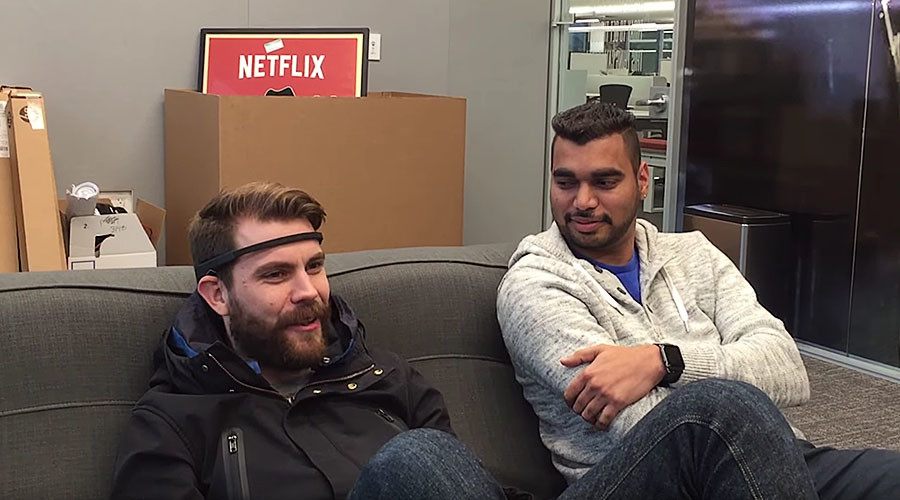No Hands! Gadget Taps Brain Waves for Netflix Picks

Netflix engineers recently developed a mind-control gadget that could use your brain to help you browse the streaming service.
As part of Netflix’s hackathon in January, which challenged employees to come up with an innovative project in 24 hours that was aimed at improving the Netflix experience in some way, a group of the company's engineers made a device that allows viewers to choose what they want to watch by using their brain waves. The so-called "Mindflix" uses a Muse headband — a wearable device that measures brain signals — that was designed to help users with meditation. However, engineers hacked the device so that it could be used for the more forgetful (or lazy) viewer.
In a "commercial" that was produced for the hackathon, the developers said that their invention could help Netflix users when they lose their remote — or, if the remote is simply too far away. The people in the YouTube video then demonstrate how the "brain wearable" acts as a remote, with the wearers moving their heads to scroll through Netflix's offerings. [Bionic Humans: Top 10 Technologies]
Mindflix was just one of the projects that was developed during Netflix’s internal hackathon. In a company blog post, other projects were highlighted, including a "picture in picture" that allows users to see what other people on their account are watching. Two of the projects were inspired by the hit Netflix-produced series "Stranger Things" — a reimagining of the show as a video game, and a Christmas sweater capable of spelling out messages. One project had a charitable mission, allowing users to donate to organizations that are related to the socially conscious titles they had watched.
While these hacks may be inventive, Netflix said that users may never see them on offer.
"While we’re excited about the creativity and thought put into these hacks, they may never become part of the Netflix product, internal infrastructure, or otherwise be used beyond Hack Day," company officials wrote in the blog post. "We are posting them here publicly to share the spirit of the event and our culture of innovation."
However, some previous projects have seen the light of day. Engineers first developed a virtual-reality app concept during a Hack Day in 2014, using an Oculus Rift to put users in a 3D-room-version of the streaming service's interface. Netflix now offers users a similar virtual-reality watching experience.
Get the world’s most fascinating discoveries delivered straight to your inbox.
Original article on Live Science.




